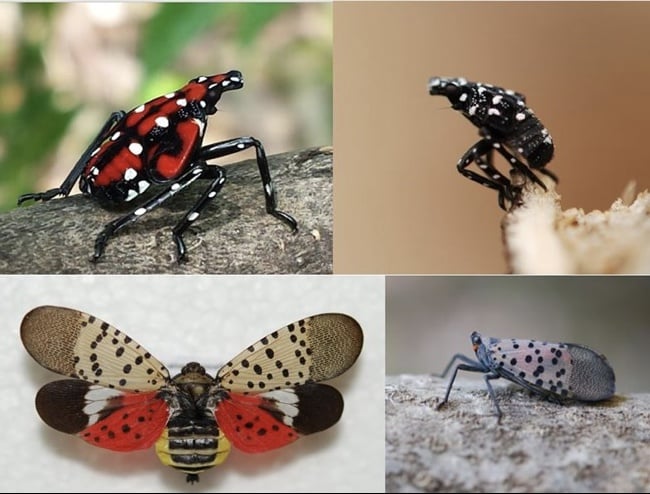Spotted Lanternfly Control

Based on the latest research from the PA Department of Agriculture & Penn State, Henderson Pest Service’s Spotted Lanternfly program includes topical treatments to kill the pest on contact and long-lasting residual & systemic control to get the pests as they emerge & feed over time.
Henderson Pest Services SLF Treatments combats all stages of the SLF life cycle from nymphs appearing late April to June to Adults swarming from July to November.
Let Henderson Pest Services protect your landscaping with our proven treatment methods & experience in dealing with this invasive & destructive pest.
Monthly services are recommended to keep these persistent insects from taking over your property & damaging your valuable landscaping.
A spotted lanternfly-free backyard is as easy as 1-2-3

STEP 1: Estimate
Request a FREE estimate by completing the form OR call 610-544-BUGS.

STEP 2: Inspection
A certified technician will evaluate your property and provide a customized estimate within 24 hours of your estimate request.

STEP 3: Schedule Your Service!
Respond by email or phone to provide approval to begin service. We will arrive within 2 days of receiving your approval.
Learn More About Pricing

Find more about pricing for our spotted lanternfly control options.
Learn MoreThere are many “Do It Yourself” actions you can take to control Spotted Lanternfly.
Henderson Pest Services recommends walking your property year-round: Inspect your property regularly to search for signs of this pest.
Trap or Kill Nymphs from April-July:
Traps: Wrap high risk trees with sticky bands. Surround the bands with chicken wire to prevent accidentally trapping birds & non target wildlife. Nymphs will get stuck as they crawl up and down the tree. Replace bands every few weeks for proper control.
Spot Treatments: If you see high populations attacking a specific plant, use a quick knockdown product like Neem Oil or insecticidal soap. Spray the oil or soap directly on the nymphs to kill them on contact. It’s important to note, spot treatments will not have a long-term effects on a larger SLF population.
Find and destroy egg masses from September-May: This helps Stop future generations from reaching the egg laying stage. One female can lay up to 30-50 eggs on just about any smooth surface. Scrape egg masses into a bag that contains rubbing alcohol or hand sanitizer, double bag & discard in the trash.
Don’t move outdoor items before checking for egg masses attached to the items prior to transporting to new locations. (Furniture, firewood, children’s toys etc…)

